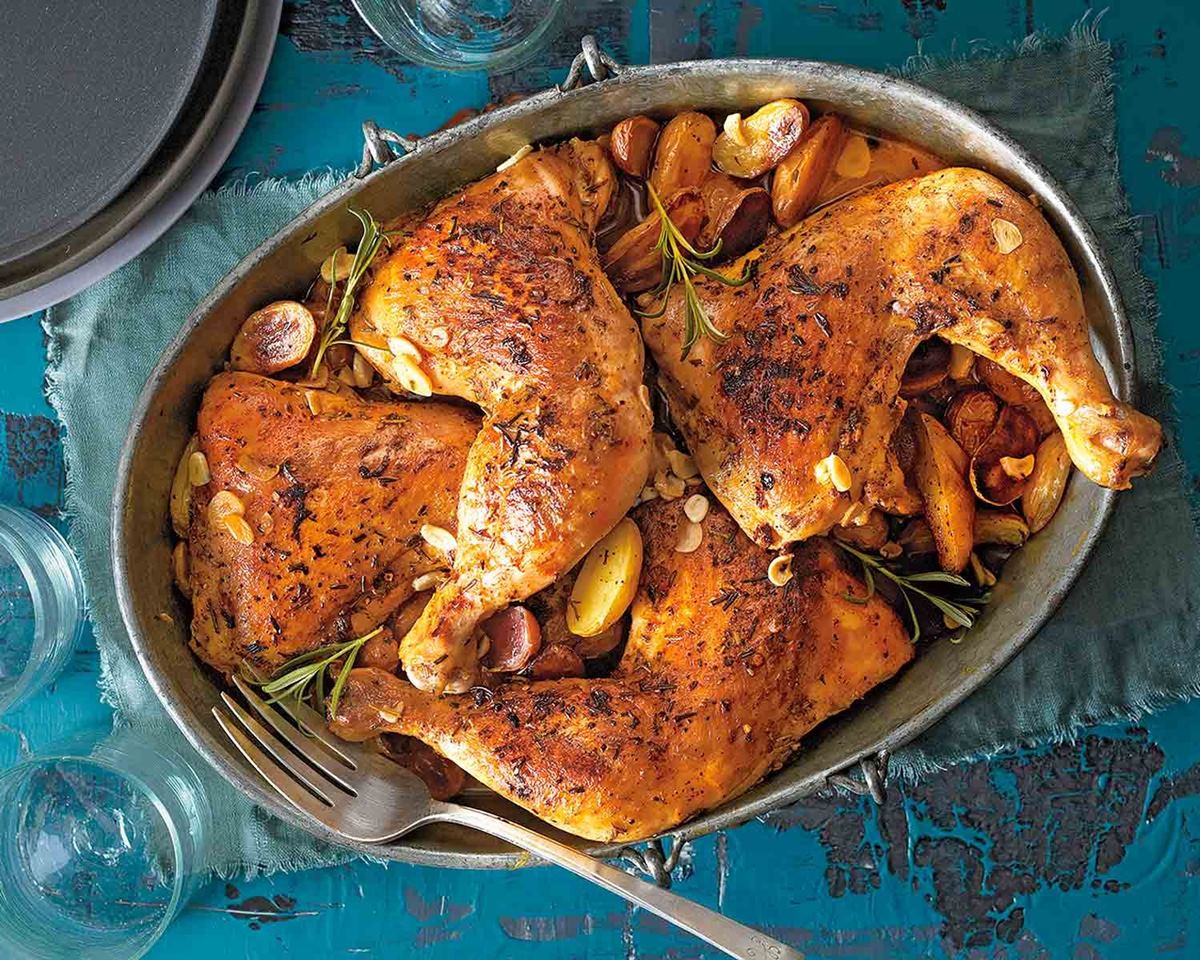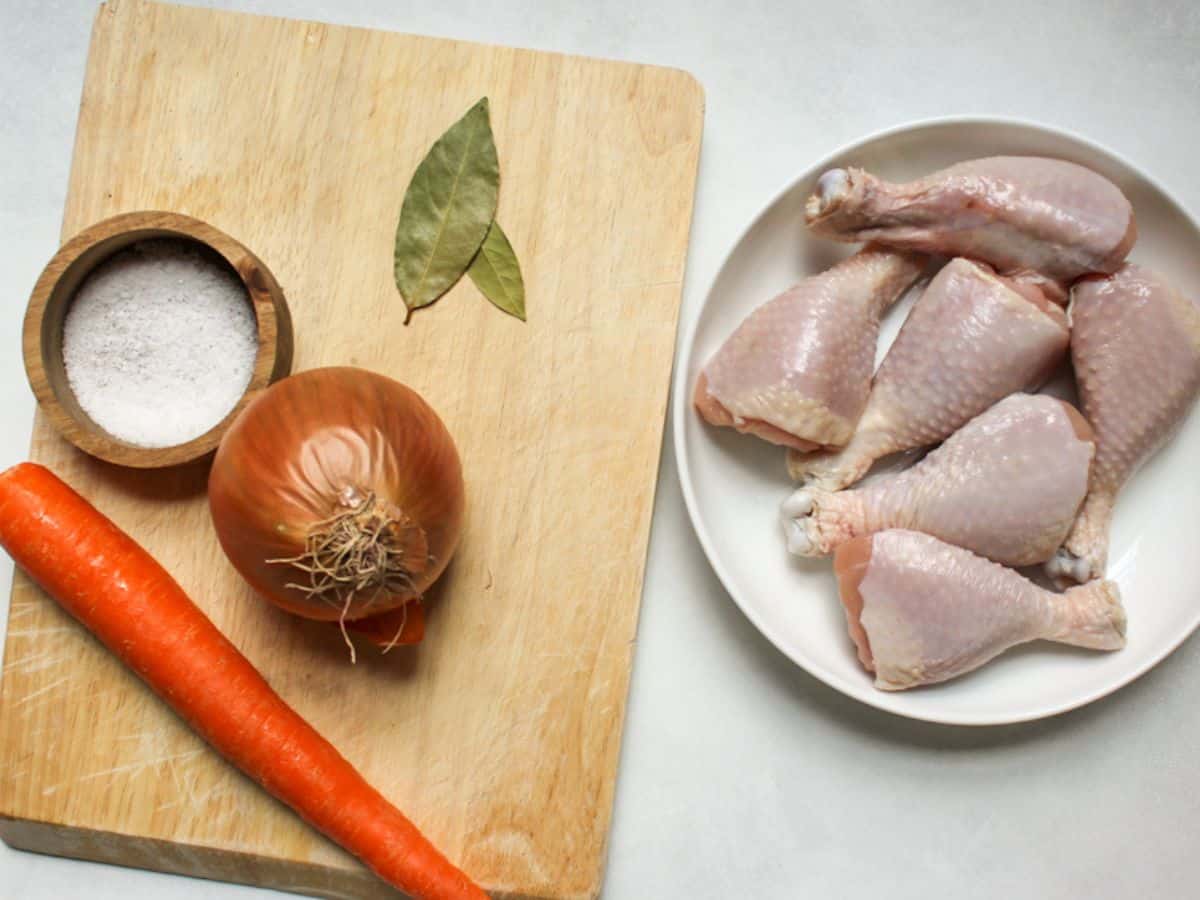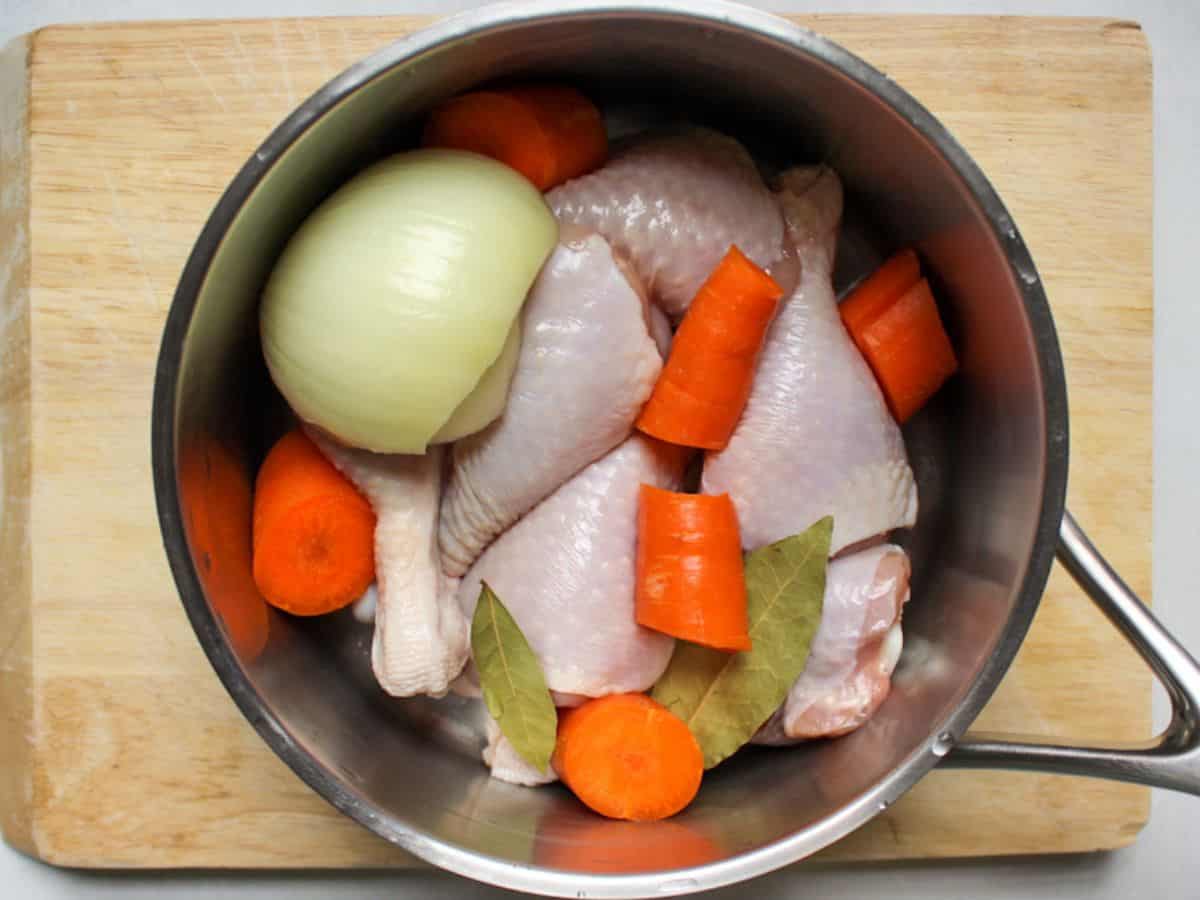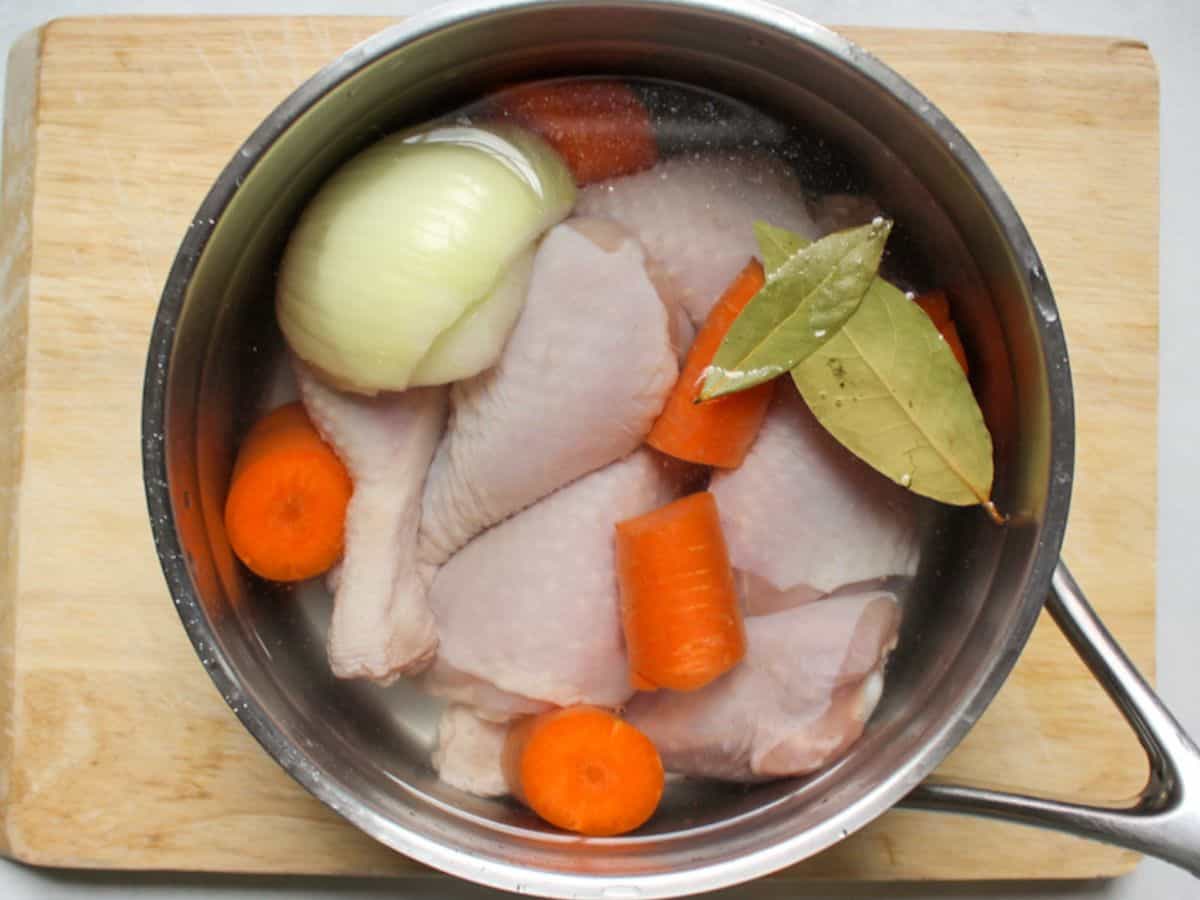Have you ever stared at a pack of chicken leg quarters wondering exactly how long to boil them? You’re not alone! As a home cook who’s boiled countless chicken pieces over the years, I’ve learned that getting the timing right makes all the difference between tough, rubbery chicken and perfectly tender, fall-off-the-bone meat
Chicken leg quarters are one of my favorite cuts because they’re economical and packed with flavor But they can be tricky to cook just right Let’s dive into everything you need to know about boiling these delicious cuts to perfection!
Quick Answer: Boiling Time for Chicken Leg Quarters
For those who just want the straight answer without the details:
Chicken leg quarters typically take about 40-50 minutes to boil properly.
However, the exact time depends on several factors like size, whether they’re fresh or frozen, and your desired tenderness. For safety, always ensure the internal temperature reaches at least 165°F (74°C).
Detailed Chicken Leg Quarter Boiling Times
Let’s break down the timing more specifically:
| Chicken Leg Quarter Type | Approximate Boiling Time |
|---|---|
| Fresh Leg Quarters | 40-50 minutes |
| Frozen Leg Quarters | 60-75 minutes (50% longer) |
| For Fall-Apart Tender Texture | 60-90 minutes |
Why Boil Chicken Leg Quarters?
Before we dive deeper into the how let’s talk about why you might want to boil chicken leg quarters
- Versatility: Boiled chicken can be used in countless recipes
- Juiciness: When done right, boiling locks in moisture
- Ease: It’s a simple, hands-off cooking method
- Healthier: Boiling requires no added oils
- Bonus broth: You get flavorful chicken broth as a by-product
Step-by-Step Guide to Boiling Chicken Leg Quarters
Now let’s get into the nitty-gritty of how to boil chicken leg quarters perfectly!
What You’ll Need:
- 4 chicken leg quarters
- 8 cups of water (enough to fully submerge the chicken)
- 2 teaspoons salt
- 1 teaspoon black pepper
- Optional: herbs and spices of your choice
Instructions:
-
Prepare the chicken: Rinse the leg quarters under cold water to remove any bone fragments or excess blood.
-
Add to pot: Place the chicken in a large pot. Make sure it’s big enough that the pieces aren’t crowded.
-
Cover with liquid: Add enough water to completely submerge the chicken (about 2 cups per leg quarter is a good rule of thumb).
-
Season the water: Add salt, pepper, and any additional seasonings you like. This is your chance to infuse flavor! Some of my favorites include:
- Bay leaves
- Garlic cloves (whole or minced)
- Onion (quartered)
- Carrots and celery
- Peppercorns
- Thyme or rosemary sprigs
-
Bring to a boil: Place the pot on the stove over medium-high heat and bring the water to a rolling boil.
-
Reduce to simmer: Once boiling, reduce the heat to maintain a gentle simmer. This is important! A too-vigorous boil can toughen the meat.
-
Cook: Let the chicken simmer for 40-50 minutes, or until the internal temperature reaches 165°F (74°C).
-
Check for doneness: Use a meat thermometer to check the internal temperature at the thickest part. The juices should run clear, not pink.
-
Rest before serving: Remove the chicken and let it rest for 5-10 minutes before serving or shredding.
Pro Tips for Perfectly Boiled Chicken Leg Quarters
Through many trials (and a few errors!), I’ve learned these tricks that make a huge difference:
1. Simmer, Don’t Boil Rapidly
A gentle simmer is key for tender meat. A rapid boil will toughen the protein fibers and give you rubbery chicken. Once the water reaches a boil, immediately reduce to a simmer where you see gentle bubbles.
2. Consider Dark Meat’s Special Properties
Here’s something many cooks don’t realize: dark meat like leg quarters actually becomes MORE tender with longer cooking times! While white meat gets dry and tough when overcooked, dark meat benefits from longer cooking.
For extra tender, fall-apart chicken leg quarters, you can safely cook them to 180-195°F (82-90°C). At these higher temperatures, the collagen in the dark meat melts into gelatin, creating that melt-in-your-mouth texture.
3. Season the Water Well
Boiled chicken has a bad reputation for being bland, but that’s only when the cooking water isn’t seasoned properly! Be generous with salt and add aromatic vegetables and herbs to create a flavorful broth that infuses into the meat.
4. Try Poaching Instead of Hard Boiling
For even more tender results, try poaching instead of hard boiling. Poaching means cooking in liquid that’s kept just below the boiling point (around 180°F). It takes a bit longer but results in super tender meat.
5. Let It Rest
Just like with other cooking methods, letting the chicken rest for 5-10 minutes after boiling allows the juices to redistribute throughout the meat, resulting in juicier chicken.
Common Mistakes to Avoid
I’ve made these mistakes so you don’t have to!
- Boiling too vigorously: As mentioned above, a hard boil toughens the meat.
- Not using enough water: Make sure the chicken is fully submerged.
- Overcrowding the pot: Give your chicken pieces some space.
- Underseasoning the water: Bland cooking liquid = bland chicken.
- Not skimming the foam: For clearer broth, skim off the foam that rises to the top.
- Cutting into the chicken immediately: Let it rest before cutting or shredding.
How to Tell When Chicken Leg Quarters Are Done
There are three reliable ways to tell if your chicken leg quarters are fully cooked:
1. Temperature Test (Most Accurate)
Use a meat thermometer in the thickest part (without touching bone):
- 165°F (75°C) for food safety
- 175-195°F (80-90°C) for fall-apart tender dark meat
2. Visual Check
- Meat should be white/opaque throughout (not pink)
- Juices should run clear when pierced
- If you see pink meat or red juices, continue cooking
3. Texture Test
- Properly cooked: Firm but tender when pressed
- Undercooked: Soft and rubbery
- Overcooked: Very tough and dry
Boiling Frozen Chicken Leg Quarters
Forgot to thaw your chicken? No problem! You can boil frozen chicken leg quarters, but you’ll need to adjust the cooking time.
Frozen chicken leg quarters take approximately 60-75 minutes to boil properly. This is about 50% longer than fresh chicken.
Important safety note: Make sure the chicken reaches the proper internal temperature throughout before consuming.
What to Do With Your Boiled Chicken Leg Quarters
Now that you’ve got perfectly boiled chicken leg quarters, what can you do with them? So many things!
- Shred for tacos, enchiladas, or burritos
- Add to soups and stews
- Make chicken salad sandwiches
- Use in casseroles
- Add to pasta dishes
- Top salads with it
- Make chicken pot pie
And don’t throw away that cooking liquid! Strain it and use it as chicken broth for soups or cooking grains.
Flavor Variations for Boiled Chicken Leg Quarters
Here are some of my favorite flavor profiles to add to the boiling liquid:
- Classic: Bay leaf, onion, carrot, celery, peppercorns
- Asian-inspired: Ginger, garlic, green onion, star anise
- Mexican: Cilantro stems, jalapeño, onion, oregano
- Mediterranean: Lemon, garlic, oregano, olive oil (added after boiling)
- Cajun: Bay leaf, cayenne, paprika, garlic, onion, celery
FAQs About Boiling Chicken Leg Quarters
Q: Can I add vegetables to the pot while the chicken leg quarters are boiling?
A: Absolutely! Adding vegetables like carrots, celery, and onions not only flavors the chicken but creates a more nutritious broth.
Q: Is it better to boil chicken leg quarters with the skin on or off?
A: This depends on your preference. Leaving the skin on adds flavor but also fat. If you’re watching calories, remove the skin before boiling.
Q: Why did my chicken turn out tough?
A: The most common reason is boiling too vigorously instead of simmering gently. Another possibility is not cooking dark meat long enough for the collagen to break down.
Q: Can I reuse the broth from boiling chicken?
A: Definitely! Strain it, let it cool, and skim off any fat from the top. Use it within 3-4 days or freeze for later use.
Q: Should I rinse chicken before boiling?
A: Current food safety guidelines actually recommend against rinsing raw chicken as it can spread bacteria around your sink and kitchen. Any bacteria will be killed during the cooking process.
Final Thoughts
Boiling chicken leg quarters is truly an art that balances proper timing, temperature, and seasoning. With the guidelines I’ve shared, you’ll be able to achieve tender, juicy, and flavorful results every time.
Remember, the key points are:
- Boil fresh chicken leg quarters for 40-50 minutes
- Aim for an internal temperature of 165°F minimum
- For fall-apart tender dark meat, cook to 180-195°F
- Always season your boiling liquid well
- Simmer gently rather than boiling rapidly
Now that you’re armed with all this knowledge, you’re ready to boil chicken leg quarters like a pro! What delicious dishes will you create with yours?

How to use boiled chicken legs
You can shred the meat and use it to make a soup, or quesadillas, or add it to any casserole that requires shredded meat.
How long to boil chicken legs
From start to finish, the whole process, which includes the prepping time and the time for the water to start boiling will take about 40-50 minutes for fresh chicken legs and 50-60 minutes for the frozen ones.
The boiling process for chicken legs, including prepping and water boiling time, typically takes 40-50 minutes for fresh drumsticks and 50-60 minutes for the frozen ones.
The boiling time depends on the size of the chicken legs, whether they are fresh or frozen
Below is the table you can refer to see the approximate boiling times for chicken legs. I always recommend using a food thermometer to make sure the chicken reaches 165°F.
And if you do not have one, check by cutting the largest leg lengthwise and if the juices run clear, the chicken is ready.
|
Size |
Fresh chicken legs (Min) |
Frozen chicken legs (Min) |
|
Small (6-8 oz) |
20-25 minutes |
30-35 minutes |
|
Medium (8-10 oz) |
25-30 minutes |
35-40 minutes |
|
Large (10-12 oz) |
30-35 minutes |
40-45 minutes |
You will need only a few ingredients to boil the chicken. If you would like to see the exact quantities and nutritional information, see the recipe card at the end of this post.
Chicken legs (drumsticks) – you can use fresh or frozen chicken legs. If you plan to use the broth, try getting pasture-raised organic meat.
Vegetables – the meat absorbs the water during the boiling process, and vegetables will add lots of flavor to the meat and broth itself. Today, I am using carrots and onion. You can also use celery, garlic, parsnip, and more. You can also skip the vegetables and use only the water.
Seasonings – I added a good amount of salt, to make the broth taste good to enjoy on its own. I also added a few bay leaves. If you have whole peppercorns, add 6-7 of those in there for more flavor.
Fresh herbs (optional) – if you have any rosemary, sage, thyme, add some to the pot as well.
Water– if you are going to use broth, I always boil the meat in filtered water. Tap is also OK if you know it is clean.

Place chicken legs in a medium or large stock pot. Add coarsely chopped carrot, half of the onion, and a few bay leaves.

Fill the stock pot with water. I like to do it in this particular order because if you add chicken last, it will be splashing all over.

Place the pot with chicken legs over medium-high heat and bring it to a gentle boil. Cover the pot and simmer the meat for about 20-35 minutes over low-medium heat.
The chicken legs are ready when the juices run clear and the internal temperature reaches 165°F.
Let the meat sit in a hot broth for another 10 minutes. Carefully remove the legs using tongs. You may serve them now or broil them for a few minutes to crisp up the skin.

- Chose pasture-raised or organic chicken.
- Flavor the broth by adding vegetables, herbs, and salt.
- Gently boil the drumsticks and avoid overcooking to prevent the meat from being tough.
- Adjust the cooking time depending on the size of the legs and whether they are fresh or frozen.
- You can grill or broil boiled drumsticks to make the skin crispy and browned.
